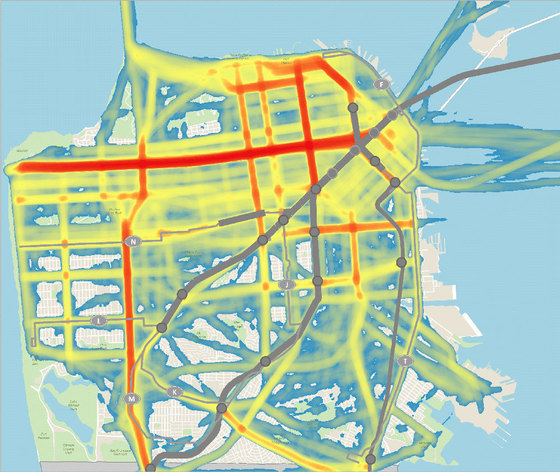Innovation of the Month:
Virtual Public Involvement
Virtual public involvement tools help transportation agencies supplement face-to-face information sharing for transportation planning efforts and project development, which improves the overall effectiveness of their outreach efforts.
Online mapping tools use web-based platforms to display project information in a familiar map format, allowing stakeholders to mark up areas of concern and suggest changes. Mapping tools can be paired with videos, narratives, and other digital information. This two-way communication technique saves agency staff time and reduces the administrative burden of collecting hard-copy public comments.
Crowdsourcing tools gather qualitative information from stakeholders and enable them to use voting or rating systems. The tools create a climate for conversation and generate a larger volume of input over time. They also reduce the need to transcribe meetings or review paper submissions.
Virtual town halls make project meetings more accessible by allowing stakeholders to participate online or by telephone. They remove a common engagement barrier because people do not need to be physically present to provide feedback on plans or projects. Virtual meetings can incorporate simulcasts to reach participants with limited English proficiency and live polling by touch-tone phone.
When the Florida Department of Transportation combined virtual with in-person meetings about highway access changes, the agency improved participation and reduced public involvement costs on the projects by more than 50 percent.
Learn about virtual public involvement techniques by participating in the “Extending Our Reach” webinar series, starting with an April 25 session on meetings-in-a-box, popup outreach, and interactive maps.
For information and technical assistance on virtual public involvement, contact Scott Allen, Jody McCullough, or Harold Peaks of the Federal Highway Administration Office of Planning, Environment, and Realty.
 Heat map of online responses. Credit: San Francisco Transportation Authority
Sign Up for Accelerating Market Readiness Webinar

Register for a webinar—April 8 from 2 to 3:30 p.m. ET—to learn how to take your highway innovation from prototype to market with funding and shared risk from FHWA’s Accelerating Market Readiness (AMR) program. The webinar will provide an overview of AMR, which will offer up to $3 million in funding to help transition innovations from research to practice, and review the process for submitting proposals. FHWA is accepting AMR project applications until April 22 at fbo.gov. For information, contact the FHWA Contracting Officer.
|
Pennsylvania STIC Highlights Safety Improvements
The Pennsylvania State Transportation Innovation Council’s 2018 STIC Year-End Report documents progress on innovation deployment, including high-friction surface treatments (HFST) and roundabouts to reduce crashes. By November 2018, the Pennsylvania Department of Transportation installed HFST on nearly 250 roadway sections. Crash data analysis of 47 locations found that fatalities dropped from eight to zero and injury crashes went from 190 to 71. Pennsylvania now has 45 roundabouts on State roads, with nine more set to open in 2019. No fatalities or serious injuries have been reported in any Pennsylvania roundabouts. A study of 11 roundabouts at locations previously controlled by stop signs or traffic signals found that total crashes dropped by 47 percent. To learn more, read Pennsylvania’s STIC Year-End Report, now in an online format featuring videos, animated infographics, and resource links, or contact the Pennsylvania STIC Management Team.
Improved PEDSAFE Tool Helps Agencies STEP Up Pedestrian Safety
FHWA updated the Pedestrian Safety Guide and Countermeasure Selection System (PEDSAFE) guidance document to be more interactive and usable to a wide range of decision makers. Within PEDSAFE’s Countermeasure Selection Tool, users can select “improve safety at uncontrolled crossings.” The tool then leads the user through a series of questions linked to the “FHWA Guide for Improving Pedestrian Safety at Uncontrolled Crossing Locations.” The tool returns a list of countermeasures suitable to the roadway conditions the user specifies, and each countermeasure links to a page in PEDSAFE that includes details about typical costs, design considerations, and installation examples across the United States. For information, contact Rebecca Crowe, safe transportation for every pedestrian (STEP) team leader.
|